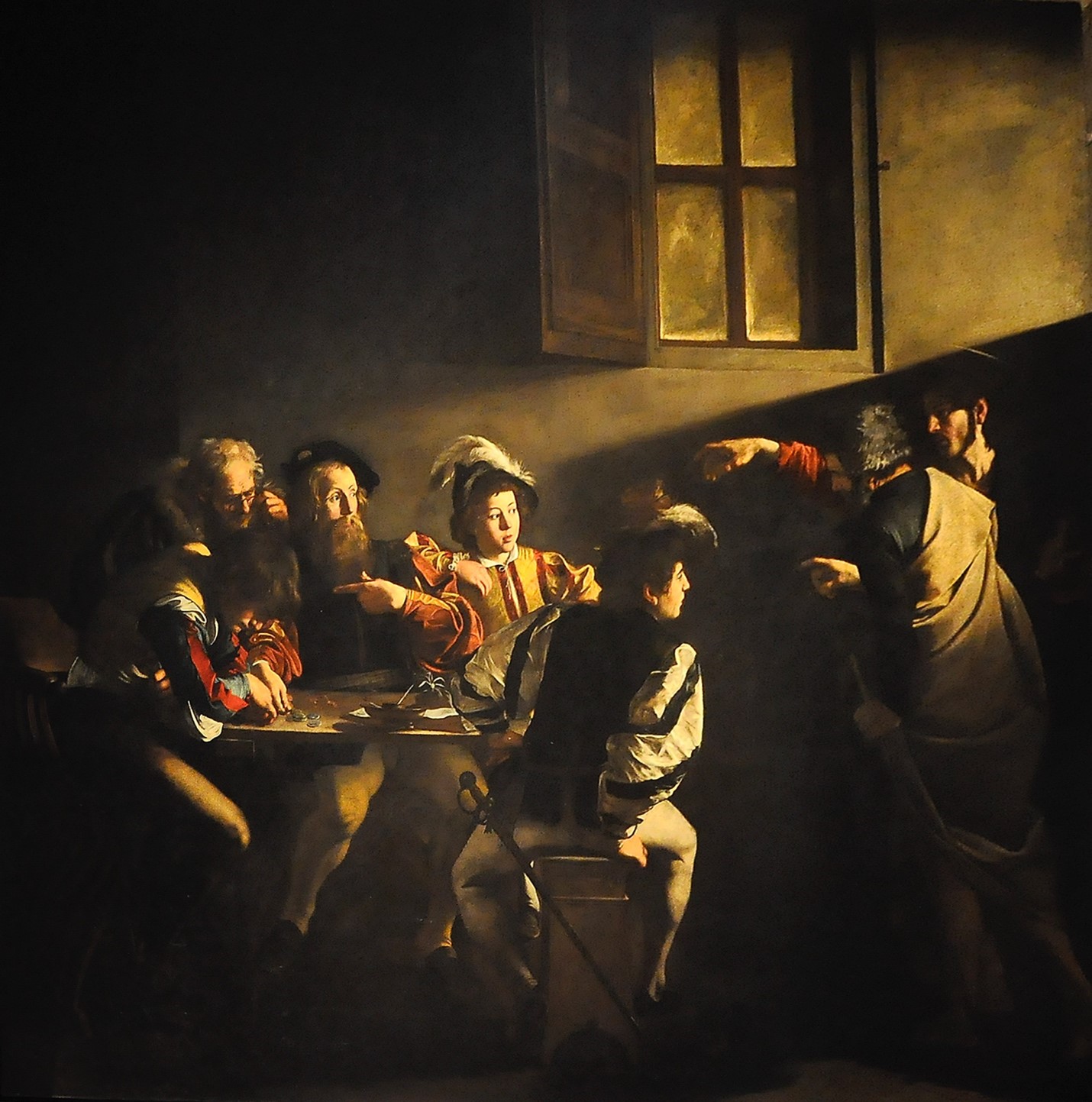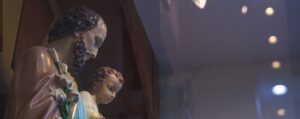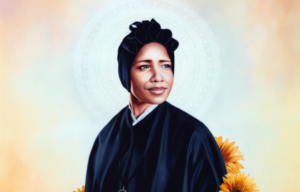
ST. MATTHEW

When you enter into a church off the Piazza Navona in Rome called San Luigi dei Francesi, a series of chapels culminate with the Contarelli Chapel which holds three huge depictions of key moments in Matthew’s life: the calling, the writing of his Gospel and his martyrdom all painted by Caravaggio around 1600. When you put a coin in a box, light illuminates these three masterpieces.
Let us pray with The Calling of St. Matthew. Today is the feast day of St. Matthew and a time to reflect on our own calls to discipleship. The Gospel (Matthew 9.9-13) and the art give insights into discipleship. Contemplate the image. What details do you notice? Who are the different characters shown? What feelings does the art evoke? Read from the Gospel of Matthew:
As Jesus was walking along, he saw a man called Matthew sitting at the tax booth; and he said to him, “Follow me.” And he got up and followed him. And as he sat at dinner in the house, many tax collectors and sinners came and were sitting with him and his disciples. When the Pharisees saw this, they said to his disciples, “Why does your teacher eat with tax collectors and sinners?” But when he heard this, he said, “Those who are well have no need of a physician, but those who are sick. Go and learn what this means, ‘I desire mercy, not sacrifice.’ For I have come to call not the righteous but sinners.”
Contemplate the painting in light of this reading. What phrase or words stand out for you? What questions do you have about the passage and the art?
Let’s consider layers of meaning using insights from religious thinkers and art critics. Jesus is the figure on the right pointing to Matthew. His hand is modelled on God’s act of the creation of Adam painted by Michelangelo on the ceiling of the Sistine Chapel. This calling comes from God. In front of Jesus with his back to us is St. Peter. He is identified by his yellow cloak, a standard artistic symbol for Peter. Peter’s hand imitates Christ’s hand symbolizing the role of the Church in echoing Christ’s call.
Five figures are gathered around a table. Note the symbolism of five plus two that echoes the five loaves and two fish distributed in the feeding of the five thousand (Matthew 14.13-21). The five around the table are dressed in clothing that would have been in style at the time of Caravaggio as opposed to the more “biblical” cloaks of Jesus and Peter. Jesus calls us to discipleship across time.
But who Jesus is point to? Which one is Matthew? Perhaps it is the bearded man who is pointing his own hand. Or the younger man who is seated on the left grasping the money. Nevertheless, the expression seems to be saying, “Who, me?” or “Who, him?” The call to discipleship is a surprise. Do I deserve this call, knowing that I am a tax collector and unworthy? Pope Francis connects with the man on left staring at his money with his own call to the Papacy. Can I accept the call to discipleship as Holy Father? He said, “I am a sinner, but I trust in the infinite mercy and patience of our Lord Jesus Christ, and I accept in a spirit of penance.”
Another theory holds that all five figures are Matthew. They are of different ages, suggesting that the call to discipleship occurs again and again at different times in our lifespan.
As we conclude our contemplation of St. Matthew’s call, consider our own calls to discipleship. How am I like Matthew? How is that calling happening now? What stops me from answering that call?
Les Miller is a husband, dad, grandfather and catechist. He has served the Catholic education community for 40 years as teacher, chaplaincy team leader, Department Head. AQ Instructor, textbook writer, and Religious Education and Family Life Consultant. Les authored the 25 Questions Series, Words for the Journey and award-winners Catholic Teacher’s Companion and Northern Light. Currently, he is an instructor and advisor with the Archdiocese of Toronto’s online Catechist formation program and lead contributor to the St. Monica Institute’s series on praying with art, Abide in Beauty.


